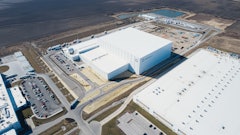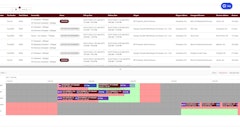U.S. demand for commercial refrigeration equipment is expected to increase 3.0 percent per year through 2018 to $10.7 billion, according to a study from Reportlinker: “U.S. Commercial Refrigeration Equipment Study Market.” Advances are driven by general factors such as an improving capital investment climate, as well as expected accelerations in foodservice revenues and food retail sales, two industries that are heavy users of commercial refrigeration.
Improving energy efficiency in new equipment will continue to drive sales as food industry participants – entities with particularly narrow profit margins – seek to reduce operating costs. Greater efficiency stems from the incorporation of proximity sensors and light emitting diode (LED) systems, and the greater use of enclosed systems. The availability of such features retrofitted to existing equipment will hamper gains to some degree.
Environmental regulations regarding refrigerants play a key role in the commercial refrigeration industry. Hydrochlorofluorocarbon (HCFC)-22, also known as R-22, is currently scheduled to phase out in stages with production ending in 2020 because it contains ozonedepleting chlorine. However, in October 2014, the U.S. EPA is scheduled to determine whether it will accelerate that phaseout date to 2018. Although commercial refrigeration equipment purchased after 2010 utilizes other refrigerants, much of the equipment installed before then – especially display cases and liquid chillers – runs on R-22.
The phaseout is expected to significantly affect refrigeration equipment sales, since many end users will replace their equipment as supplies of R-22 become unavailable for charging, since commercially available alternatives are not optimal for most systems. Hydrofluorocarbons (HFCs) are the most common alternative to HCFC refrigerants; however, HFCs have a high global warming potential. Since the typical grocery store has an average annual leak rate of about 25 percent of its refrigerant, there is concern within the industry that HFCs might see greater regulation as well. Natural refrigerants such as carbon dioxide, ammonia, and propane are among the most environmentally friendly alternatives and are seeing increasing usage in new equipment.
Transportation refrigeration equipment, which includes shipping containers, trailer refrigeration systems, and truck refrigeration systems, is the largest segment and will account for the largest share of overall industry demand growth through 2018. Sales gains for shipping containers will be spurred by greater opportunities for U.S.-based food producers in foreign markets. Trailer and truck refrigeration systems will benefit from further gains in medium and heavy truck shipments, and rising interest in fresh food products.
Ongoing warehouse consolidation, which extends the distances from warehouses to consumers, also boosts demand for more refrigerated trucks and trailers.
Manufacturers of commercial refrigeration equipment for the U.S. market vary from small, privately held firms to large multinational corporations. However, two companies – United Technologies and Ingersoll-Rand – commanded more than one-fourth of total U.S. sales in 2013. A second tier of suppliers – Hussmann, Dover, Lennox, and Manitowoc – accounted for an additional 20 percent.
This industry study presents historical demand data (2003, 2008, 2013) plus forecasts for 2018 and 2023 by market and product. The study also considers market environment factors, evaluates company market share and profiles key U.S. industry players.
To order this report, access the following URL link: http://www.reportlinker.com/p02114701/US-Commercial-Refrigeration-Equipment-study-Market.html




























